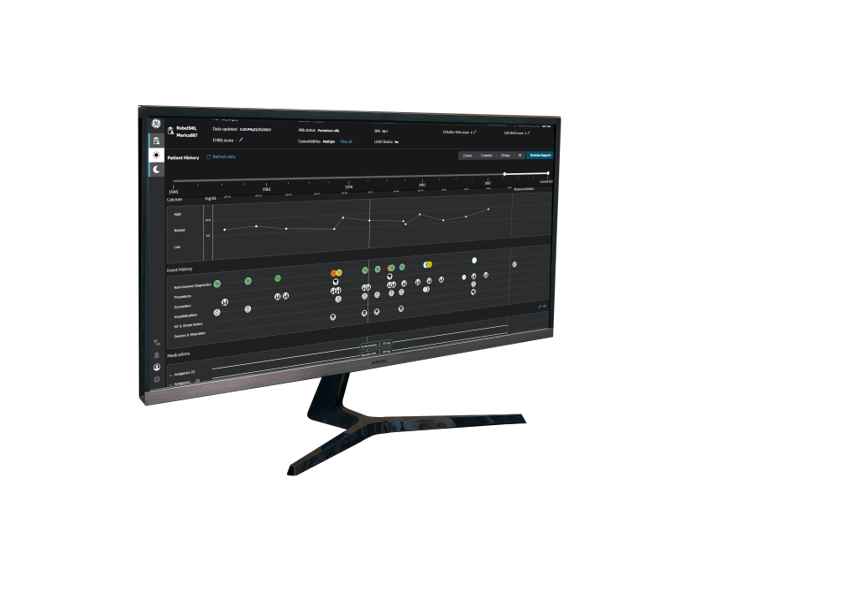NEWS BRIEF
GE HealthCare Launches CardioVisio for Atrial Fibrillation, a Digital, Patient-Centric Clinical Decision Support Tool to Enable Precision Care
• Cardiovascular diseases are the leading cause of death globally, with more than 60% of these deaths being preventable and premature.1,2
• Within the umbrella of cardiovascular disease, AFib is the most common form of arrhythmia diagnosed in clinical practice, affecting millions of people worldwide - projections indicate that the prevalence of AFib could reach 15.9 million people in the United States by 2050 and 17.9 million in Europe by 2060.3
• Additionally, AFib is often misdiagnosed or not treated appropriately, with up to 30% of cases missed in routine clinical practice.4
• Existing diagnosis and treatment care models for AFib have been shown to be complex and time consuming, with clinicians facing a multitude of disparate patient data generated from years of diagnostic exams, medications, medical appointments, and interventions
CardioVisio for AFib
It is critical that progress is made in driving precision care for the management of patients suffering from AFib as people living with the condition are five times more likely to experience a stroke5 and AFib is a common cause of hospitalization.6
To help address these challenges, GE HealthCare launched CardioVisio for AFib, a digital tool designed to assist clinicians in visualizing longitudinal data relevant for disease progression from multiple data sources, and driving evidence-based clinical decision support directed by up-to-date AFib guidelines.
CardioVisio for AFib assists the clinician in visualizing longitudinal data relevant for disease progression from multiple data sources, saving time and aiding clinical decision making by offering guideline-directed therapy recommendations. Each automated step includes explainability and traceability, allowing the healthcare provider to audit and edit the process and clinical output with the goal of better meeting the needs of each unique AFib patient.
Karin Dalsin
M: +1 612 219 2855
Karin.Dalsin@ge.com
1. World Health Organization (WHO) estimated 17.9 million people died from cardiovascular diseases in 2019. https://www.who.int/news-room/fact-sheets/detail/cardiovascular-diseases-(cvds).
2. Vaduganathan M, Mensah G, Turco J, et al. The Global Burden of Cardiovascular Diseases and Risk. J Am Coll Cardiol. 2022 Dec, 80 (25) 2361–2371. https://doi.org/10.1016/j.jacc.2022.11.005
3. Vinter N, Huang Q, Fenger-Grøn M, Frost L, Benjamin EJ, Trinquart L. Trends in excess mortality associated with atrial fibrillation over 45 years (Framingham Heart Study): community based cohort study. BMJ. 2020 Aug 11;370:m2724. doi: 10.1136/bmj.m2724. PMID: 32784208; PMCID: PMC7418071.
4. January CT, et al. 2019 AHA/ACC/HRS Focused Update of the 2014 AHA/ACC/HRS Guideline for the Management of Patients With Atrial Fibrillation. Circulation. 2019; 140: e125–e151.https://www.ahajournals.org/doi/full/10.1161/CIR.0000000000000665
5. Alshehri AM. Stroke in atrial fibrillation: Review of risk stratification and preventive therapy. J Family Community Med. 2019 May-Aug;26(2):92-97. doi: 10.4103/jfcm.JFCM_99_18. PMID: 31143079; PMCID: PMC6515763.
6. Gallagher et al, Heart 2019;105:1358-1363.

